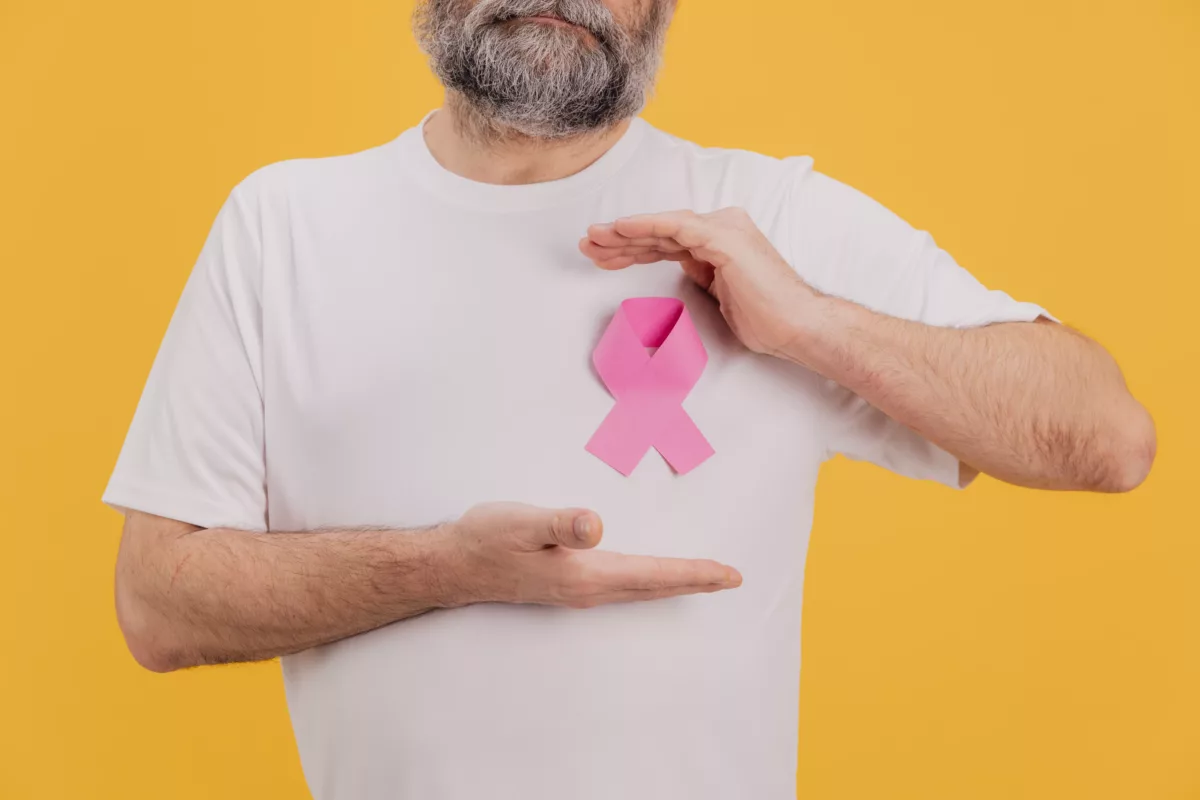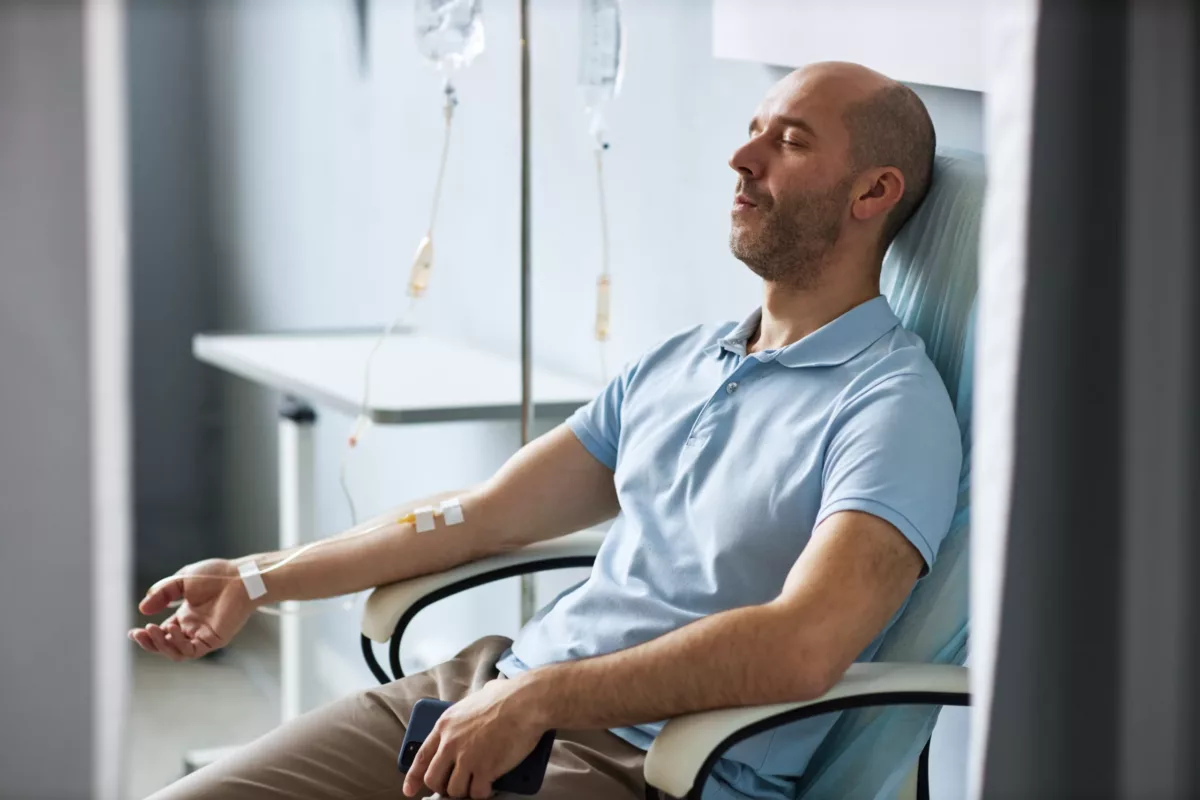This is a cancer type that occurs rarely, and it starts in the breast tissue of males. It is called breast male breast cancer, and it mostly occurs in women. However, both men and women are born with a certain breast tissue, which makes them susceptible to breast cancer. While male breast cancer happens mostly in older adults, it may occur at any age as well.
Physicians commonly prescribe different treatments among patients because it depends on the extent (stage) of the cancer, existing health problems, and other factors. However, treatments usually include surgery to remove the tumor, but doctors may recommend chemotherapy or radiation surgery.
Symptoms
Check below for some symptoms that males with breast cancer usually experience:
- A lump of thickening of the skin on the chest that does not cause pain
- Chest skin changes, including puckering, dimpling, or scaling
- Nipple changes (including skin color changes or scaling)
- Bleeding or discharge from the nipple
Immediately contact your healthcare professional if any of the symptoms listed above happen.
Causes
Healthcare providers do not fully understand why male breast cancer happens. However, it begins when breast cells develop DNA mutations (changes). Normally, DNA contains instructions that tell cells when to grow, multiply, and die. DNA changes give the cells other instructions that make them grow and multiply quickly. If the abnormal cells become too much, they form a mass called a tumor. The tumor may invade healthy tissues and destroy them. If the symptoms are ignored and the cancer is not treated, it may lead to metastatic cancer. Usually, it occurs when the tumor breaks and spreads to other body tissues and organs.
Where Does Breast Cancer in Men Usually Start?
Each person is born with a small amount of breast tissue that consists of milk-producing glands, ducts that carry the milk to the nipples, and fat. While women begin to grow more breast tissue, often at birth, men no longer grow breast tissue. However, both can develop breast cancer. Check below for some male breast cancer types:
- Ductal carcinoma – This is the most common breast cancer in men, and it begins to develop in the ducts that connect to the nipples.
- Lobular carcinoma – In such cases, the cancer starts in the glands that potentially produce breast milk. These glands are called lobules, and this cancer type happens less frequently in men because they have fewer lobular cells.
- Other breast cancer types – These include inflammatory breast cancer and Paget’s disease of the nipple.
Risk Factors
Doctors identified some factors that may elevate the risk of developing breast cancer in men. Examples include:
- Age – The risk of breast cancer increases in people over 60 years old.
- Prostate cancer medicines with Estrogen – People who administer medications that contain Estrogen for prostate cancer treatment also are at increased risk of developing breast cancer.
- Family history of breast cancer – Those who have a parent or sibling with breast cancer are more prone to developing this cancer type.
- Inherited DNA mutations (changes) – There are some abnormal genes that may increase the risk of breast cancer. These genes usually pass from biological parents to biological children. For example, DNA mutations in BRCA1 and BRCA2 significantly increase the risk of breast cancer.
- Klinefelter syndrome – This condition happens when men are born with an additional X chromosome. It negatively affects the development of the testes, which causes hormonal imbalances and may increase the risk of breast cancer.
- Liver disease – Some liver diseases (such as cirrhosis) can cause hormonal imbalances that increase the risk of breast cancer.
- Obesity – Excess body weight is frequently associated with high Estrogen levels. As a result, the risk of breast cancer in obese people increases.
- Testicle disease or surgery – People who have orchitis or surgery to remove a testicle (orchiectomy) are at increased risk of developing breast cancer.
How to Prevent Male Breast Cancer?
Generally, it is not possible to prevent this cancer type because experts do not know the exact cause. The following tips may help prevent or avoid this cancer type in people with an increased risk of breast cancer. Examples include:
- Family history of breast cancer – This cancer type may run in families and be passed to children during pregnancy. For example, people born with BRCA1 or BRCA2 genes are at higher risk of developing breast cancer. That’s why it is advised to perform some genetic tests before pregnancy if you have a family history of this cancer type.
- Transgender man – The risk of breast cancer persists whether you have had surgery on the chest or not. Consult with your doctor about cancer screening or follow the routine examination of your chest. You should inform your healthcare professional about any changes you notice.
Diagnosis
Healthcare professionals may perform an evaluation of your medical and family history and ask some questions about the symptoms before diagnosing breast cancer. However, to confirm the condition and rule out others that cause similar symptoms, doctors usually perform the following tests. Examples include:
- Physical examination – During this procedure, doctors will check your breasts for irregularities associated with breast cancer. These include lumps, skin changes, and others.
- Imaging tests – These include breast X-ray (also called mammogram), ultrasound, or MRI (magnetic resonance imaging). Imaging tests allow doctors to get detailed images of the breast tissue.
- Biopsy – This test involves a small sample of the affected tissue that is tested in the laboratory for cancer cells.
If you are diagnosed with breast cancer, physicians may perform additional tests to find the stage (extent) of the cancer. Staging the cancer may help make the best treatment plan for you.
Treatment
In most cases, the primary treatment for male breast cancer is surgery. However, you may need additional treatments (such as radiation therapy, chemotherapy, and others) to destroy cancer cells that may remain even after surgery.
Surgery
This treatment is used to remove the tumor and sometimes a small amount of healthy tissue around it. Check below what usually includes surgery for male breast cancer:
- Mastectomy (the removal of all breast tissue) – During this procedure, the breast tissue is removed completely, along with the nipple and certain skin around it (areola). Mastectomy is the most common surgery used for breast cancer in men.
- Lumpectomy (tumor removal along with the healthy tissue) – During this surgery, they will remove the cancer and a small amount of healthy tissue. However, the rest of the breast remains. In most cases, physicians recommend radiation therapy or chemotherapy after lumpectomy to destroy the remaining cancer cells.
- Sentinel lymph node biopsy – This involves the removal of certain lymph nodes on which cancer is more likely to spread and test in the laboratory.
Radiation Therapy
During this treatment, the patient lies down on a table while a specific machine moves around him/her and directs the radiation to the tumor. For instance, the radiation directed to the chest or armpit in males with breast cancer. This therapy uses powerful energy beams that often come from protons, X-rays, and other sources to destroy cancer cells. Physicians usually recommend this treatment after surgery.
Hormone Therapy
This treatment option is recommended for people after surgery to prevent cancer recurrence or slow down its growth if it spreads to other body parts. Commonly, doctors prescribe Tamoxifen, but other hormone therapies are also available if you cannot take this medicine.
Chemotherapy
This treatment uses strong medicines to destroy cancer cells throughout the body. These medications are usually given intravenously (IV), but the oral form is also available. This is an effective treatment for people whose cancer has spread to other body parts or who do not respond to other treatments.
Targeted Therapy
This therapy also involves specific medicines that block a protein in the cancer cells, causing them to die. It is usually prescribed by doctors in people with advanced stages of cancer. However, your doctor may perform some tests to determine whether targeted therapy is effective for you. Sometimes, it is prescribed for people with metastatic cancer.
Frequently Asked Questions
What is the survival rate for male breast cancer?
Generally, the 5-year survival rate for men with breast cancer is roughly 84%. However, if the cancer does not spread to other body structures and organs, the survival rate increases to 96%.
What are the primary symptoms of male breast cancer?
Men who develop breast cancer usually notice swelling or a lump in the breast or nipple changes. Check below for additional symptoms that often appear in males with breast cancer:
- Bleeding from the nipples
- Rash
- Irritation, redness, or color changes of the breast skin
- Ulcers or sores on the chest
If any of the previous symptoms occur, immediately visit your healthcare professional.
Is it possible to cure male breast cancer?
Yes, if it is found in the early stages only. However, if it is diagnosed when the tumor breaks and spreads throughout the body, curing chances significantly drop. If you have additional questions, ask your physician.




